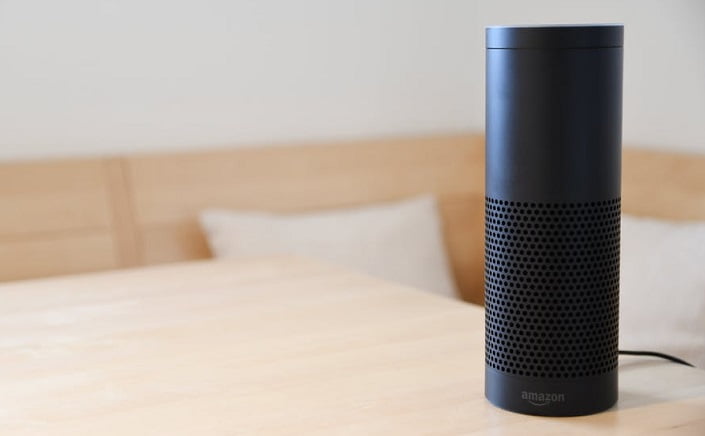
Amazon is exploring the possibility of adding real-time translation to Alexa’s range of capabilities. If the real-time translation technology is enabled, this will help Alexa to tackle cultural misunderstandings, subtle nuances of speech and complex language barriers. Although the popular voice-enabled assistant can already translate simple words and phrases between a small number of languages, real-time translation from Alexa will enable universal communication on a much more sophisticated level.
Universal real-time translation from Alexa
Amazon is keen to make Alexa more useful and by creating multi-lingual translation services, it could theoretically help users to communicate in any situation, eliminating cultural barriers.
Universal real-time translation from Alexa would mean the voice-enabled assistant could help out not only with basic translations but also with complex social situations, where cultural differences impact the appropriateness of language choices.
Alexa would use in-depth knowledge of a country’s culture to create a truly usable and subtle translation suitable for any specific social situation. This is far beyond simple the word-to-word translation capabilities of most current translation tools.
For example, if a user wants to communicate in a situation where they feel unsure about the cultural differences and accepted conventions, real-time translation from Alexa could help them to navigate the correct levels of formality, using the right subtleties of language, taking into account the cultural and social context.
Alexa could help you navigate language barriers whether you need to understand street slang in Rio, discuss legal issues with a solicitor in Berlin or chat about current affairs with new friends in Copenhagen.
Bridging the culture divide
As some cultures are more conservative and formal than others, this would help to create a smooth communication that could otherwise be hampered by cultural differences.
A user could ask Alexa: “Alexa, I have just entered an office block in Tokyo and need to find the meeting room. What should I say to the receptionist?” or “Alexa, I have entered a restaurant in Lima with two friends, what should I say and to whom to get a table?”
One change in the inflection of your voice can create an entirely new meaning in a foreign language. Alexa would be able to cope with subtle changes in pronunciation to communicate a user’s intended message.
This would offer a huge improvement on many current translation tools. The proposed development also shows how technology can be used as effectively in real-time translation tools as in current language apps.
How Alexa works as a voice-enabled assistant
Alexa is Amazon’s voice-enabled assistant, which is currently integrated into millions of technological devices. Alexa is used in smart home products such as the smart speakers Amazon Echo and Amazon Dot. These devices can respond to verbal commands to play music, set alarms, read the news, control other devices and much more.
People primarily use Alexa in devices around the home, but for a translation tool, it would need to be carried around. This means Amazon would need to develop a translation device with Alexa integrated into it, or enable integration with other devices that can house Amazon’s voice assistant.
The future of Amazon’s Alexa as a real-time translation tool
Amazon’s aim is that Alexa will one day become a super-computer, capable of translating languages between many people in real time. A simple voice command will enable full understanding of a situation in seconds and a suitable response.
Tens of millions of Alexa-enabled devices have been sold since the first Echo speaker went on sale in 2014. According to the latest figures, Amazon Echo will account for 67.9% of the voice-enabled speaker market in 2018.
If real-time translation from Alexa becomes a reality, Amazon will be certain to sell many devices for this feature alone. There is a strong market for such devices and many companies have been exploring this area with varying degrees of success.
Other technology companies, including Samsung and Google, have launched similar real-time translation devices with mixed results. None have achieved as much as their makers had hoped.
The market still awaits a reliable translation device that works to translate conversations fluently in real time, while taking into consideration the subtle cultural differences that can affect appropriate behaviour and language use in any given situation.
Translation tools from Google, Samsung, Microsoft and Apple
Google Pixel Buds was said to be able to translate up to 40 languages in real time, but the result was not as smooth as users had hoped.
Another translation innovation was Samsung’s Bixby assistant, which translates text from over 100 languages in real time, but cannot cope with spoken language yet.
Other assistants, such as Microsoft’s Cortana and Apple’s Siri, can translate English words into a few other languages, but their success is limited and operations relatively basic.
Thoughts on the future of real-time translation
Hopefully Amazon will succeed in turning Alexa into a real-time translation tool that can offer smooth communication across all languages and cultures. To the average user, this feels very ‘sci-fi’ and unrealistic, bringing to mind the translation tools in Hitch-Hikers Guide to the Galaxy or Star Trek!
Real-time translation from Alexa would be a dream come true for anyone travelling to a foreign country where they don’t speak the language. It would also help to reduce concerns about cultural differences, which could potentially lead to offence or misunderstanding if the wrong phrase was used.
It is a certainly difficult task to develop a real-translation tool that can cope with contextual and cultural barriers. We hope Amazon can achieve it!
Share your thoughts on real-time translation from Alexa
Have you used the Alexa voice-enabled assistant?
Do you think Alexa will be able to offer real-time translation that works effectively?
Can cultural barriers really be removed by such a device?
Have you used any of the other translation tools mentioned in this article? Which device was the most effective?
